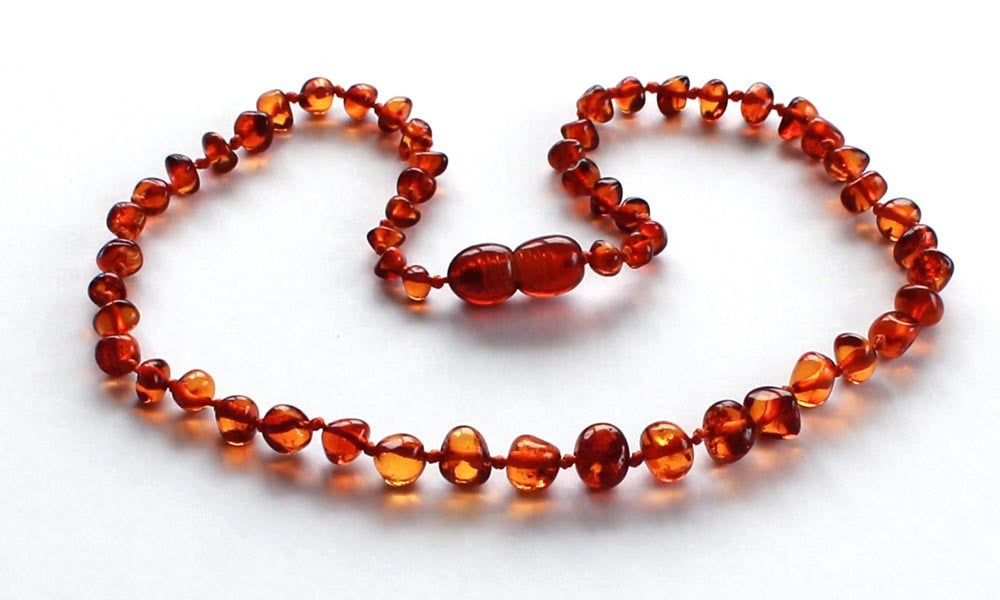
Test if your amber beads are real or fake
As amber products gain popularity, fake amber look-alikes flood the market. For someone wanting to purchase an amber product, it's important to be sure that you are purchasing real amber from a trustworthy source, as only real amber contains the miracle ingredient; succinic acid.
At Feelgood Health, we only sell high-quality amber pieces with authentic beads sourced from the Baltic Sea Region. CLICK HERE to view our variety of Baltic Amber items.
Succinic acid is a dicarboxylic acid which is gentle, non-toxic and has no side effects whatsoever. When amber is worn against the skin, direct contact and body heat will cause the Baltic amber to release succinic acid, which then is absorbed into the skin and bloodstream. Succinic acid is sought after for many reasons, but is best known to help soothe teething babies.
Sadly, as the demand for amber products increases, people are finding that they have been tricked into buying inauthentic amber. Amber has many look-alike stones that imitate amber: copal, glass, phenolic resin, celluloid, casein.
While you can take your amber to someone professional who will be able to tell you (at a cost) if it's real amber, there are various methods you can follow at home, to determine whether your amber is genuine or fake. Here are the simple and effective ways to tell is your amber is real or a look-alike:
1) The Salt Water Test
Real amber stones can be found floating around in the Baltic Sea! It would then make sense that one of the ways to tell if your amber is real, is if it can float in salt water. Mix two cups of warm water with a quarter cup of salt in a bowl, and stir the mixture until the salt has completely dissolved. Then, place an amber bead in the solution. If the piece of amber floats to the top then it is authentic amber. If it sinks, it is likely fake amber.
2) Visual Test
The visual test is probably the easiest way to tell if your amber is real or fake. All you need to do is look at your amber beads and identify any imperfections (tiny cracks, small air bubbles). Real amber beads should have these small imperfections - fake amber beads usually are either clear OR contain a lot of larger air bubbles. Also, real amber beads should vary in their size and shape. They should not be perfectly round. Remember, amber is a natural product, and doesn’t come perfectly!
3) Hot Needle Test
Try find the largest amber bead that you have to get the best results. Smaller amber beads are easier to damage. Heat a needle or metal pin with a hot flame and push it against an amber bead. If it leaves a slight dent or few little cracks, it's likely it's an authentic amber bead. If the needle goes in easily and deeply to melt the bead, you're probably sitting with fake amber.
4) Smell Test
Take an amber bead and rub it between the palms of your hands for a while. If you smell something similar to a pine tree scent, congratulations, your amber bead is real! No smell = fake amber.
Have you ever tested your amber beads? Which method worked best for you? Let us know below!
If you have any health-related questions, please contact us or leave a comment below for FREE advice. We always love hearing from you!






Leave a comment